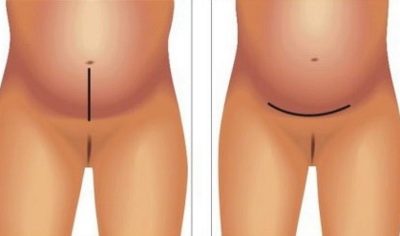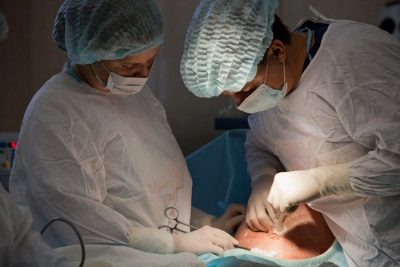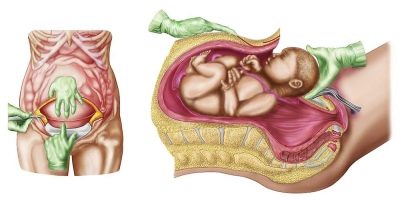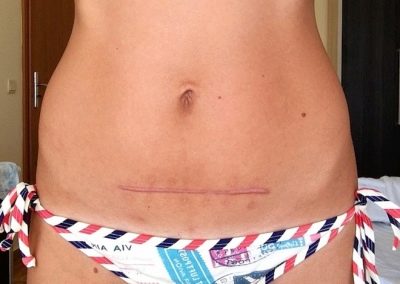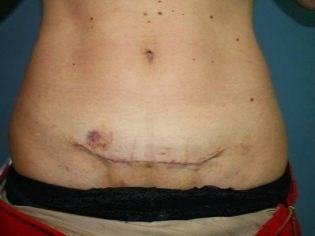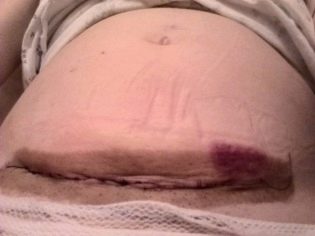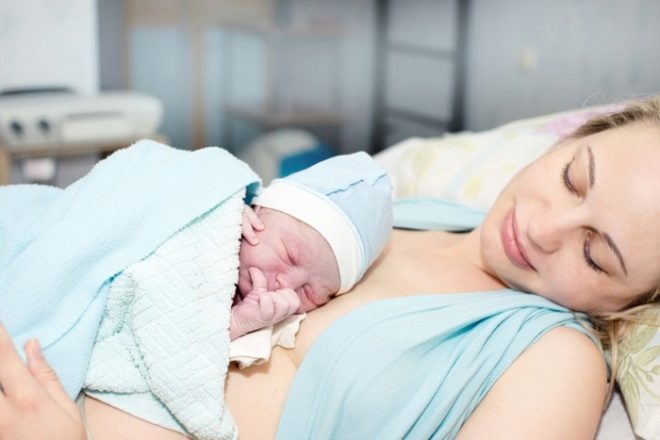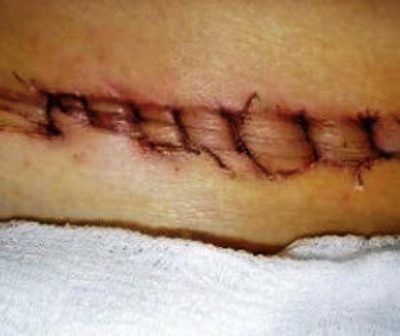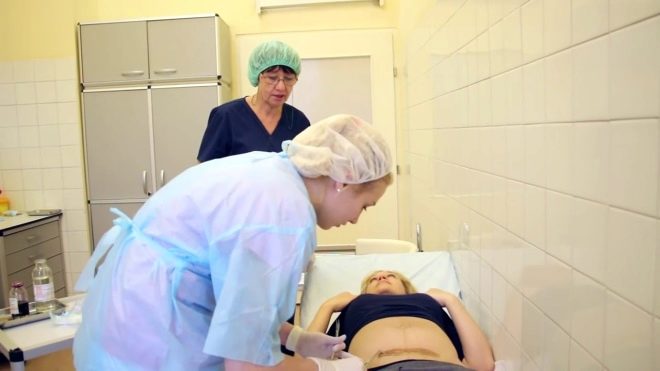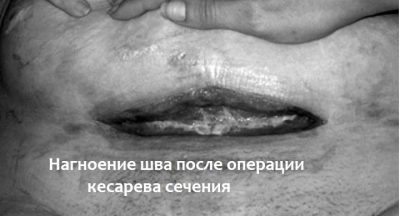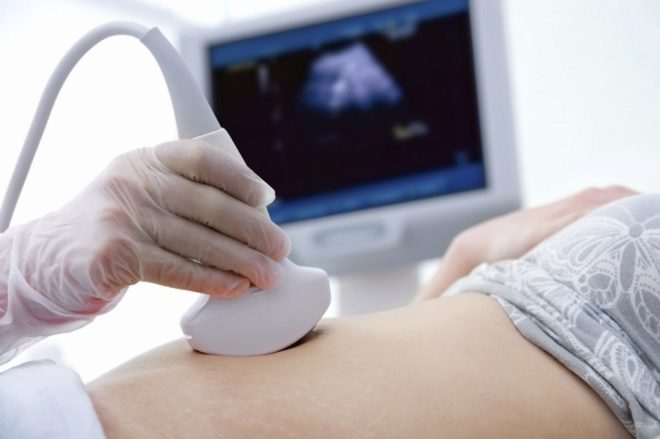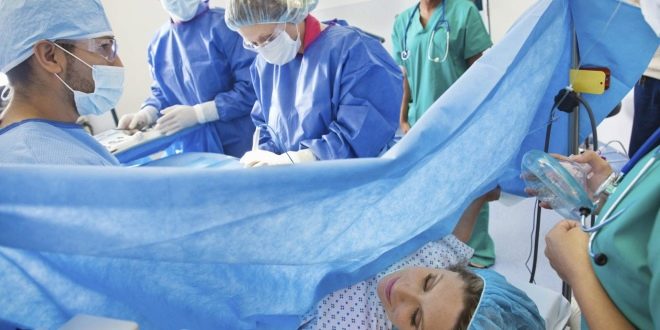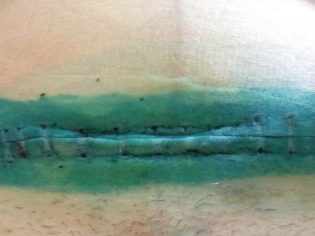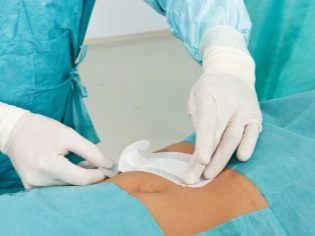What if the suture after a cesarean section?
One of the complications after cesarean section is the seam divergence. An external seam can disperse, and this will immediately become apparent, and the integrity of the internal one may be broken, and this can only be seen with the help of diagnosticians. The discrepancy may occur after surgery, and years later, when a woman wants to feel the joy of motherhood again. In this article, we will talk about why the seams diverge, what to do if this happens, and how to prevent such a situation.
Internal and external seams
During operative labor, the surgeon dissects not only the abdominal wall, but also the anterior wall of the uterus. Immediately after the birth of the fetus and placenta retrieval, each incision is stitched. For sutures inside and outside, various suturing techniques are used, as well as special materials.
When the operation is planned, most often make a horizontal section just above the pubis (in the lower segment of the uterus). Emergency caesarean section can be carried out with a dissection of the abdominal wall both horizontally and vertically - this depends on how urgently you need to remove the child.
When forming the internal suture, the surgeon has no right to make mistakes - the wound edges should coincide as precisely as possible. Even a slight displacement can lead to the formation of a rough and insolvent scar. Uterus sutures are usually self-absorbable, these seams are then not necessary to be removed or processed. Most often the uterus is sewn with a single continuous suture.
Outer seams can be stitched. The materials for the external suture can be different - silk surgical sutures, self-absorbable sutures, medical alloy clips. Recently, a number of clinics have been practicing a new method of soldering a suture with liquid nitrogen, that is, without the use of threads at all.
Outer seams may be cosmetic or conventional. The first then look more aesthetically pleasing. If we talk about the external seams, then the horizontal section according to Pfannenstiel is always more preferable, since the probability of its divergence is much lower than with a corporal section (vertically from the navel to the pubic zone). Horizontal outer seams heal better than vertical ones.
The healing process takes place in different ways. Internal sutures on the uterus heal in about 8 weeks. After this time, a long, almost two-year formation of a strong and reliable scar begins. If negative factors do not interfere with this process, it will be quite strong and will be able to withstand the carrying of the next child without any problems, and even in some cases, the physiological labor will naturally occur.
If more coarse connective tissue is formed during the formation, the scar may be untenable. This would pose a risk of its divergence in the future if the woman becomes pregnant.
The external suture heals a little more than a week, after which the sutures are removed if they are not self-absorbable. A vertical suture after the corporal caesarean section heals for about 2 months and requires more careful care.
Types of violation
All problems with the state of the seam can be divided into early and late. The early ones are those that make themselves known in the coming days or weeks after the operation.Late problems include problems that are significantly distant in time from the moment of surgical intervention.
Early complications may be:
- bleeding from the external suture area;
- internal bleeding;
- hematoma formation in the area of scars;
- inflammatory process (both internal and external);
- divergence of the inner or outer seam.
Late complications are the formation of fistulas, hernias and uterine divergence along the scar during the next pregnancy or childbirth.
Reasons for discrepancy
There are many reasons that can lead to seam divergence, both inside and outside, but the leading place is given to violation of the regime recommended during the rehabilitation period. So, and external, and especially internal seams can suffer due to improper physical activity of the puerperal.
It is recommended to get up after the operation only after 8-10 hours, but some try to do it earlier, which leads to early injury to the wired areas. Inaccurate attempts to get up, sit down after the operation, and subsequently ignoring the requirement to limit weight lifting with 3-4 kilograms is the main reason for the seam.
The reason for the divergence of postoperative sutures can be infection. Both internal and external wound surfaces may be infected. In general, infectious complications after cesarean section are one of the most formidable and most likely, despite sterility in the operating room and technological progress. Inflammation or suppuration disrupt the process of accretion of the wound edges, which may well be expressed in violation of the integrity of the seam.
Another reason, not the most common, but very likely - the immune response of a woman’s body to surgical material with which sutures are applied. Immunity is generally quite difficult to understand, and therefore one can never say in advance whether the seams will take root, especially internal self-absorbable ones. If the immunity starts to reject them, the inflammatory process will inevitably begin, which will lead to a violation of the integrity of the scar. A certain negative immune reaction can also occur on the external suture material.
The reason for the violation of the state of internal sutures may be too active contractions of the uterus after surgery. But hypertonicity of the reproductive organ after surgery is quite rare.
Signs and symptoms
With the definition of problems in the state of the seam of the outer there are usually no questions. The area of overlapping of the threads is reddened, hematomas may be observed, suckling or blood oozes from the wound, and pus may be released. At the same time the body temperature usually rises. The suture zone hurts, the seam "burns", pulls, worries even in the prone position. The discrepancy itself is manifested by the formation of a hole of a certain size (depending on how many stitches have not taken root or are rejected as a result of inflammation or mechanical injury).
It is more difficult to understand that there are problems with an internal seam. At the same time, the picture will be somewhat blurred and similar to a number of other complications after the operation. But an experienced physician will first of all suspect that the scars are diverging and will verify these suspicions using certain diagnostic methods.
If there are problems with the healing of the suture on the uterus, the woman will have a high temperature. Discharge from the genital organs will be much more abundant than after the usual uncomplicated operation, they may contain large fragments of suture material. The general condition of the pregnant woman will rapidly deteriorate. Blood pressure decreases, there may be episodes of loss of consciousness, rapid heartbeat. The skin becomes pale, sweating increases.
The appearance of cones on the area of the external scar can not be ignored. This may be a hernia, and fistula, if the bumps themselves are filled with pus and ichor.
Discrepancy during re-pregnancy
The danger of a suture after cesarean section on the uterus lies in the fact that it can not withstand the carrying of the next pregnancy and disperse. Especially the risks of discrepancies increase with:
- pregnancy that occurred too quickly after the first operation (less than 2 years have passed);
- inconsistent heterogeneous internal scar;
- large fruit.
To monitor the stretching of the internal scar on the uterus during pregnancy, the woman repeatedly makes ultrasound with the determination of the thickness and thinning zones of the internal suture. But alas, it is impossible to stop the beginning rupture of the uterus.
The danger of such a discrepancy, it is obvious - the death of the fetus and its mother. Moreover, the woman dies from massive bleeding into the abdominal cavity, and the fetus from acute sudden hypoxia, which occurs due to impaired uteroplacental blood flow at the time of rupture of the uterus.
The first stage - the stage of threatening rupture, can not be felt in any way. She has no symptoms, and only a specialist in ultrasound diagnostics is able to determine this condition. In this case, an emergency caesarean section is performed on the woman.
The beginning seam rupture in the uterus is characterized by sharp abdominal pain, the development of a painful shock is possible. Blood pressure drops, tachycardia appears. In a baby, the usual heart rate slows down dramatically.
The rupture may be accompanied by the development of heavy, heavy bleeding. If this occurs during childbirth, if a woman decides to give birth with a scar on the uterus on her own, then an emergency cesarean section is also performed. The uterus is in most cases removed.
How to behave in such cases?
Considering the seriousness of the situation, if any problems with sutures are detected, the woman should immediately report them to the doctor. If problems are found in the maternity hospital, the woman's temperature rises, the postpartum discharge becomes more abundant, there are signs of external scarring, then you cannot hide it from the medical staff. Woman will be assisted. If the problem is found already at home, after discharge, the woman needs to take a horizontal position, call an ambulance and wait for the arrival of the brigade. You should not go to clinics and women's clinics on your own, since the discrepancy may increase, and if we are talking about an internal seam, the bill goes on for hours.
When you call "emergency" need to report that that you suspect a divergence of the scar and describe in detail your state of health at the moment. This is important, because in this case, a midwife on duty will be included in the team of doctors.
Infectious lesions of the sutures are usually treated with antibiotics, both systemically and locally. If there is an internal discrepancy, a woman will undergo a surgical procedure to impose a new suture or to remove the uterus, if it is not possible to suture the gap.
If a rupture of an internal scar is detected at any stage during a subsequent pregnancy, it cannot be prolonged. Conducted delivery operation. If the child is very premature, he, alas, may not survive. If a woman is late brought to a medical facility, she, unfortunately, may also not survive.
Prevention
Problems with stitches are easier to prevent than to cure. Taking into account the seriousness of the consequences of discrepancies in postoperative sutures, a woman should strictly follow the recommendations after a cesarean section:
- lift the weight is strictly prohibited, the limit - 3-4 kg for at least six months;
- squat, fall, sharply jump can not, the press should not swing up to six months after the operation;
- after discharge, the external suture should be treated every day - to dry with hydrogen peroxide, lubricate the area around it with green paint;
- before removing the sutures, it is necessary to wear a surgical dressing on the wound; after removal, the decision to wear it is made individually depending on the condition of the suture;
- sex earlier than 2 months after the operation is contraindicated - the likelihood of mechanical injury of internal sutures and infection increases;
- when making hygienic procedures, a woman should ensure that tap water does not get into the vagina, it is impossible to douche;
- before planning a re-pregnancy, you need to be examined and make an ultrasound with the determination of scar thickness.
On how to care for the suture after cesarean section, see the following video.


